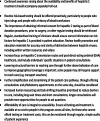Patients' experience of accessing hepatitis C treatment through the Myanmar national hepatitis C treatment program: a qualitative evaluation
- PMID: 38229074
- PMCID: PMC10792827
- DOI: 10.1186/s12913-023-10456-0
Patients' experience of accessing hepatitis C treatment through the Myanmar national hepatitis C treatment program: a qualitative evaluation
Abstract
Background: Globally, 56.8 million people are living with hepatitis C and over three-quarters of those reside in low and middle-income countries (LMICs). Barriers and enablers to hepatitis C care among people who inject drugs in high-income countries are well documented. However, there is scant literature describing the patient experience in LMICs. Understanding the barriers and enablers to care from the patient perspective is important to inform service refinements to improve accessibility and acceptability of hepatitis C care.
Methods: We conducted a qualitative evaluation of the patient experience of accessing the national hepatitis C program at eight hospital sites in Myanmar. Semi-structured interviews were conducted with four to five participants per site. Interview data were analysed thematically, with deductive codes from Levesque et al.'s (2013) Framework on patient-centred access to healthcare.
Results: Across the eight sites, 38 participants who had completed treatment were interviewed. Barriers to accessing care were mostly related to attending for care and included travel time and costs, multiple appointments, and wait times. Some participants described how they did not receive adequate information on hepatitis C, particularly its transmission routes, and on the level of cirrhosis of their liver and what they were required to do after treatment (i.e. reduce alcohol consumption, liver cirrhosis monitoring). Many participants commented that they had few or no opportunities to ask questions. Provision of treatment at no cost was essential to accessibility, and gratitude for free treatment led to high acceptability of care, even when accessing care was inconvenient.
Conclusions: These findings highlight the importance of streamlining and decentralising health services, adequate human resourcing and training, and affordable treatment in maximising the accessibility and acceptability of hepatitis C care in LMICs. Findings from this work will inform future service delivery refinements for national program and other decentralised programs to improve accessibility and acceptability of hepatitis C care in Myanmar.
Keywords: Barriers; Enablers; Hepatitis C; Hospital; Low and middle-income countries; Myanmar; National program; Patient experience.
© 2024. The Author(s).
Conflict of interest statement
MH has received investigator-initiated grant funding from Gilead Sciences and Abbvie for unrelated work. AP has received investigator-initiated grant funding from Gilead Sciences, MSD and Abbvie and speaker fees from Gilead Sciences for unrelated work. JH has received investigator-initiated grant funding and speaker fees from Gilead Sciences for unrelated work. WLY has received Gilead Sciences Fellowship for related work. KPK has received non-financial support from Mylan, Hetero and Royal Ruby. WN has received non-financial support from Mylan and Cipla. All others declare no potential competing interests.
Figures
Similar articles
-
Access to needles and syringes and methadone maintenance therapy among people who inject drugs in Yangon, Myanmar: a qualitative study.Harm Reduct J. 2022 Sep 29;19(1):107. doi: 10.1186/s12954-022-00692-8. Harm Reduct J. 2022. PMID: 36175872 Free PMC article.
-
Motivations, facilitators and barriers to accessing hepatitis C treatment among people who inject drugs in two South African cities.Harm Reduct J. 2020 Jun 10;17(1):39. doi: 10.1186/s12954-020-00382-3. Harm Reduct J. 2020. PMID: 32522210 Free PMC article.
-
The patient experience of patient-centered communication with nurses in the hospital setting: a qualitative systematic review protocol.JBI Database System Rev Implement Rep. 2015 Jan;13(1):76-87. doi: 10.11124/jbisrir-2015-1072. JBI Database System Rev Implement Rep. 2015. PMID: 26447009
-
Initial success from a public health approach to hepatitis C testing, treatment and cure in seven countries: the road to elimination.BMJ Glob Health. 2020 Dec;5(12):e003767. doi: 10.1136/bmjgh-2020-003767. BMJ Glob Health. 2020. PMID: 33328200 Free PMC article. Review.
-
Access to and sustainability of abortion services: a systematic review and meta-analysis for the National Institute of Health and Care Excellence-new clinical guidelines for England.Hum Reprod Update. 2020 Nov 1;26(6):886-903. doi: 10.1093/humupd/dmaa026. Hum Reprod Update. 2020. PMID: 32712660
References
-
- World Health Organization (WHO). Global progress report on HIV, viral hepatitis and sexually transmitted Infections, 2021. Accountability for the global health sector strategies 2016–2021: actions for impact. Geneva; 2021.
-
- World Health Organization (WHO). Progress report on access to hepatitis C treatment: focus on overcoming barriers in low- and middle-income countries. Geneva; 2018.
-
- Clinton Health Access Initiative (CHAI). HCV Market Intelligence Report 2021 and Preliminary HBV Market Insights. 2021.
-
- World Health Organization (WHO). Updated recommendations on treatment of adolescents and children with chronic HCV Infection, and HCV simplified service delivery and diagnostic. Geneva; 2022. - PubMed
MeSH terms
LinkOut - more resources
Full Text Sources
Medical
Miscellaneous



